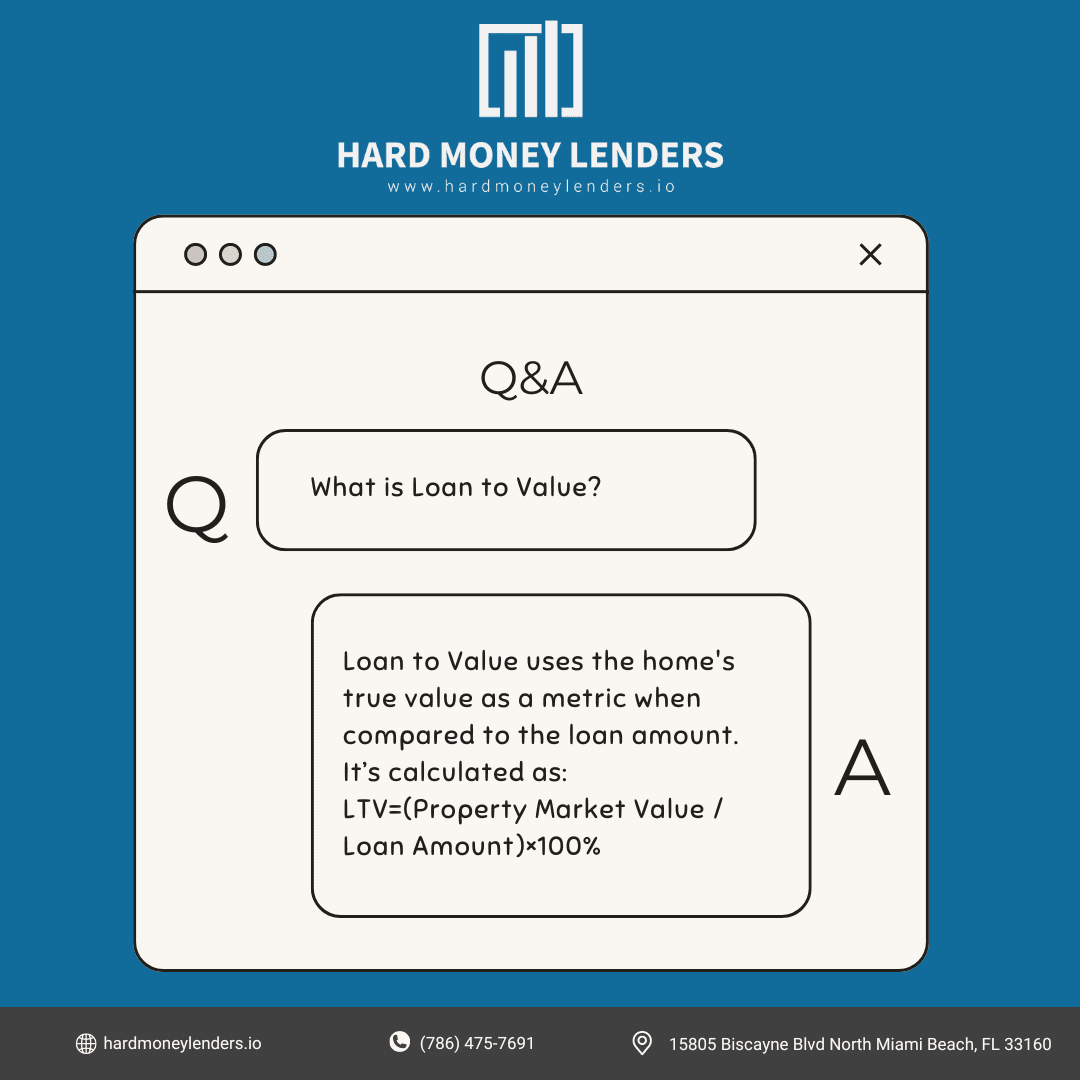Last Updated on May 27, 2024
Buying a home is an exciting time. The feeling of owning your own property can be exhilarating. If you have your heart set on purchasing a property, you would want to know all the details right? Of course.
When purchasing a property, many people have been given the loan amount by their mortgage brokers and are told that this is what they need to buy the property. However, there is more to the story. There is another price involved and that is the purchase price. Though there is another term to consider, loan to value, in this article we’re going to focus on what the difference is between loan amount and purchase price.
What is the loan amount?

It also becomes your principal balance when taking out a loan, which is the total debt on your home before interest charges are calculated. This principal balance can increase or decrease over time depending on whether or not you make additional payments to pay off your loan faster or decide to refinance your home loan.
What factors can influence the loan amount you’re approved for?
Several factors influence how much you’ll be approved for when you apply for a mortgage.
These include…
Your credit score
A good credit score will help you qualify for lower interest rates and make it more likely that your application will be approved. If your score is bad or low, however, it could affect how much money the lender is willing to give you in a loan amount. Checking your credit score can easily be done by visiting sites like Credit Karma and Experian
Type of loan
Different types of loans have different requirements when determining what they’ll lend people and thus what properties they can afford to buy.
- FHA loans – These loans are reserved exclusively for first-time homebuyers who need smaller amounts than typical mortgages have traditionally required.
- Fannie Mae/Freddie Mac (or “conventional”) loans – Require larger down payments but offer more flexibility on what kind of property can be purchased with them.
- VA loans – These are only available to veterans and those with active service members (and spouses).
As experts in the industry you can be confident that at Hard Money Lenders we can help you get into the perfect loan program that best suits your needs.
 Location of the home
Location of the home
Different locations have different housing markets, which means that homes in more desirable areas will be worth more and cost more to purchase. But if you’re trying to buy a house in a less popular area, your lender may not be willing to let you borrow as much money against it.
Type of property
Some types of homes are more valuable than others. A house on a lake or oceanfront property will cost more than one in an inner-city suburb, for example. A condo might be cheaper than a detached home with a yard, but it still requires the same amount of money upfront before any lender will approve your loan.
Condition of the home
The less maintenance the home has had, the more likely it is that you’ll need to make repairs and improvements before you can move in. This can be especially costly buying an older property. If you’re looking at a home that needs work done, make sure it’s something that can be finished without breaking your budget.
Impact of Interest Rates on Loan Amounts
Interest rates directly impact the cost of borrowing for home purchases. When rates are low, borrowing is generally cheaper, potentially allowing buyers to afford a more expensive home for the same monthly payment. Conversely, higher rates make borrowing more expensive, reducing affordability.
- How Interest Rates Affect Payments: Interest rates determine the amount of interest you pay on your mortgage each month. A lower rate means lower monthly payments and less money paid over the life of the loan. For example, on a $300,000 loan, a 1% difference in the interest rate could mean over $50,000 in additional or saved interest costs over a 30-year loan period.
- Locking in Rates: Given the fluctuation in market rates, buyers can opt to lock in an interest rate with their lender, securing a specified rate for a set period that typically ranges from 30 to 60 days. This lock protects you from rate increases while your loan is processed, which can be crucial in a volatile market.
- Factors Influencing Rates: Credit scores are a significant factor; higher scores generally secure lower rates due to the lower risk perceived by lenders. Economic conditions, the Federal Reserve’s policies, inflation, and other global economic events can also influence mortgage rates.
Benefits of Pre-Approval for Loan Amounts
- Strengthens Buying Position: Being pre-approved for a mortgage signals to sellers that you are a serious buyer with confirmed financial backing, potentially making your offer more attractive compared to those from buyers who are not pre-approved. This can be particularly advantageous in competitive housing markets.
- Clarifies Budget Constraints: Pre-approval gives you a clear idea of how much you can borrow, helping to narrow your property search to realistically priced homes. This prevents the disappointment of falling in love with a home that is outside your financial reach.
- Pre-qualification vs. Pre-approval:
- Pre-qualification is an informal estimate of how much you might be able to borrow, based on financial details you provide. There is no credit check; it’s usually a quick process that can often be done online or over the phone.
- Pre-approval involves a more detailed look at your finances, including a credit check, and provides a specific amount that you are approved to borrow. It is a more rigorous process but offers a more accurate and stronger backing for your house-hunting efforts.
What is the Loan to Value Ratio?
The loan to value ratio is a term that you will often hear when buying a property. It is the percentage of the property price that you will be required to pay as a down payment or deposit. This can also be known as equity, which is the difference between what you owe on your mortgage and how much your property’s worth. It is calculated by dividing your total mortgage amount by the total purchase price of real estate.

For example, if you are buying a property for $500,000 and want to put down 10 percent as a down payment, you will need to come up with $50,000 in cash. The loan-to-value ratio would be calculated as follows: $500,000 / $50,000 = 10%
The loan-to-value ratio is an important factor in determining how much money you will need for a down payment. It’s also used by lenders as a measure of your financial stability and ability to repay your mortgage debt.
The higher your loan-to-value ratio, the less risk you pose to a lender. That’s because if you default on your mortgage, they will be able to sell your property and recover some of their losses through foreclosure.
Bank Rate has an easy-to-use calculator that will help you determine your LTV Ratio.
What is the Purchase Price?
The purchase price is the agreed amount on the property between the buyer and the seller. It’s what you will pay for the property excluding all other expenses such as commissions, legal fees, etc. This could be a bit confusing because it may seem like the loan amount and the purchase price are one in the same. However, they are not. There are many reasons why your purchase price would be different from your loan amount, so you’ll want to make sure that you’re prepared with enough money set aside for closing costs. This will help you avoid any surprises later on down the road.
What are closing costs?
Your final cost of purchasing might be different than what was originally listed in your sales contract because of extra fees also called closing costs
Closing costs are additional fees that you pay when you buy a home. They’re not paid to the lender, but rather to third parties such as real estate agents, attorneys, and title companies.
Real estate agent fees
Real estate agents can charge buyers and sellers for their services. The home buyer or seller typically pays the fee at closing, but some states allow for it to be split between both parties.
Title insurance
Title insurance is a type of insurance that protects against loss resulting from defects in the title to real estate. Keep in mind, title insurance policies vary depending on the property and company you choose. It generally costs between 0.5% and 1% of the purchase price, depending on your location and whether you have any unique features or conditions that may increase your risk of loss (for example, if you’re buying an older home). The main thing to remember when purchasing a title insurance policy is that it protects you against loss due to defects in the title (such as unpaid taxes), not just theft or fraud by sellers.
Attorney’s fees (if applicable)
The fee structure for attorneys can vary from state to state and from one firm to another. In some states, attorneys charge flat fees while others can charge an hourly rate. Also, the complexity of your purchase can make a difference in the cost of the fees.
When purchasing a property it is a good idea to consider having an attorney to help. An attorney can negotiate the best deal, ensure all contract terms are met, and avoid problems that could arise after closing.
Property Taxes
Property taxes are a percentage of the value of your property. They’re usually paid to the county in which your home is located, and they’re generally payable monthly, quarterly, or annually. Your county assessor’s office will determine how much you’ll owe based on two factors:
1) How much your property is worth.
2) What percentage of that value you’ll be paying each month.
The amount of money you pay can fluctuate significantly from year to year if there’s been a significant change in market values for properties within that jurisdiction.
Closing costs might seem like a hassle at first but they’re part of the closing process. This means that they can’t be avoided completely, so your best bet would be to work with your lender to keep them down so that they don’t hinder your ability to get into a new home.
Final Thoughts on the Difference Between Loan Amount and Purchase Price
Ultimately, whether you are a first-time buyer or an experienced one, understanding how the loan amount and the purchase price work as well as how each affects the other will help you know what to expect in your case should you be purchasing a property. With all the different costs involved with purchasing a property, it is easy to get confused. Please feel free to reach out to us by giving us a call at (786) 475-7691 as one of our lending experts will be available to help.
We hope we have provided you with some insights into how the loan amount and the purchase price differ and how you can use them to your advantage when buying that much-awaited house!
FAQ
Should the loan amount be higher than the purchase price?
Generally, the loan amount should align closely with the purchase price of a home, minus any down payment. However, there are instances where the loan amount can be higher. This happens most often with certain types of loans that allow for additional financing to cover other costs like renovations, closing costs, or furniture. For example, an FHA 203(k) loan permits borrowers to finance both the purchase of a home and the cost of its rehabilitation through a single mortgage. Additionally, VA loans can also allow for the finance of funding fees which might slightly exceed the actual purchase price.
Moreover, when considering such an arrangement, buyers should be cautious. Financing more than the purchase price increases the total amount of debt and, consequently, the interest paid over the life of the loan. It also affects the loan-to-value ratio (LTV), potentially leading to the necessity of purchasing private mortgage insurance (PMI), which adds to monthly expenses. Financial advisors often suggest a conservative approach to borrowing, emphasizing that the long-term costs associated with higher loan amounts can significantly impact one’s financial stability.
In essence, while it is technically possible for a loan amount to exceed the purchase price under specific loan programs, it is critical to understand the financial implications, including higher monthly payments and increased debt responsibility. Prospective homebuyers should consult with mortgage professionals to fully understand the terms and conditions before proceeding with such options.
What is the difference between loan to value and loan to purchase price?
The “loan to value” (LTV) ratio and “loan to purchase price” ratio are key financial metrics used by lenders to assess the risk level of a loan, but they serve slightly different purposes. The LTV ratio is the more commonly used measure, representing the ratio of the loan amount to the appraised value of the property. It is crucial in the lending decision-making process because it helps lenders evaluate the risk of loaning money against the property’s value.
On the other hand, the “loan to purchase price” ratio directly compares the loan amount to the purchase price agreed upon by the buyer and seller. While similar to LTV, this ratio can differ if the appraised value does not match the purchase price, a common scenario in highly competitive real estate markets or in cases where buyers are purchasing below market value.
For example, if a home is purchased for $300,000 but appraises for $310,000, and the buyer finances $270,000, the loan to purchase price ratio would be 90% ($270,000 divided by $300,000), whereas the LTV would be approximately 87% ($270,000 divided by $310,000). This difference can be significant for lenders as it affects the mortgage terms, including interest rates and the need for PMI.
Understanding both ratios helps borrowers grasp how different aspects of the property value and purchase price affect their mortgage terms and financial commitments.
What is the difference between base loan amount and sales price?
The base loan amount is the figure that represents the actual amount of money a lender agrees to loan without any additional costs, such as closing costs or mortgage insurance premiums, which might be financed as part of the loan in certain types of mortgages. The sales price, however, is the total amount that the buyer agrees to pay the seller, and this is the figure that negotiations typically revolve around during the buying process.
For instance, if a buyer agrees to a sales price of $250,000 for a home and opts to make a down payment of 20% ($50,000), the base loan amount would be $200,000. However, if the buyer chooses to roll closing costs amounting to $5,000 into the mortgage, the total loan amount would then become $205,000, yet the sales price of the home remains at $250,000.
This distinction is vital for understanding financial obligations and how different elements of a real estate transaction are financed. It affects not only how much the buyer needs to borrow but also impacts the calculation of LTV ratios and other financing terms.
Is down payment based on purchase price or loan amount?
The down payment is almost universally calculated based on the purchase price of a home, not the loan amount. This upfront payment is expressed as a percentage of the total purchase price and directly reduces the amount of money that needs to be borrowed from a lender. For example, a 10% down payment on a home with a purchase price of $300,000 is $30,000, leaving a loan amount of $270,000.
Calculating the down payment based on the purchase price helps standardize the mortgage process and provides clarity to both buyers and lenders by setting a clear benchmark for the initial investment required from the buyer. It also impacts the buyer’s equity in the property from the beginning of the mortgage period and influences the loan’s interest rate, monthly payments, and the necessity forPMI or other insurance costs.
Why is my loan amount lower than my purchase price?
There are several reasons why a loan amount might be lower than the purchase price. Primarily, it reflects the down payment made by the borrower. The down payment is subtracted from the purchase price to determine the amount that needs to be financed through the loan. For instance, if the purchase price of a home is $300,000 and the buyer makes a 20% down payment ($60,000), the loan amount would be $240,000.
Additionally, a lower loan amount can also result from negotiations where the buyer pays for some of the property costs out-of-pocket, such as certain closing fees or upfront repairs agreed upon during the sale. It could also indicate that the buyer is taking advantage of a purchasing incentive, such as a seller’s concession where the seller agrees to cover some of the purchase costs, effectively reducing the amount needed to be borrowed.
In some cases, if a property is appraised at a lower value than the agreed purchase price, the lender may only offer a loan amount that covers the appraised value, not the full purchase price, assuming the buyer doesn’t wish to cover the difference. This situation could lead to a renegotiation of the sale price or require the buyer to find additional funds to maintain the original purchase agreement.
Is mortgage pre-approval for loan amount or purchase price?
Mortgage pre-approval is generally given for a loan amount, not a specific purchase price. When you receive a pre-approval from a lender, it indicates the maximum amount they are willing to lend based on your financial background, credit score, income, and debt levels. This pre-approval gives you an idea of the price range of homes you can afford but does not commit you or the lender to a specific purchase price.
Having a pre-approved loan amount allows buyers to shop for properties with a clearer budget in mind, making them more competitive in the market. It signals to sellers that the buyer is serious and has secured financing up to a certain amount, which can be particularly advantageous in bidding situations. However, the actual purchase price of a home may vary, and the final loan amount will depend on factors like the home’s appraised value, the negotiated sale price, and any additional financing terms agreed upon between the buyer and the lender.
What happens if a home appraisal is lower than the loan amount?
If a home appraisal comes in lower than the loan amount, it can pose significant challenges for both the buyer and the seller. This situation, often referred to as an “appraisal gap,” requires immediate attention because lenders typically base the loan amount on the lower of the purchase price or appraised value.
In such cases, several options are available:
- Buyer makes up the difference: The buyer can pay the difference between the appraised value and the purchase price in cash.
- Renegotiation: The buyer and seller can renegotiate the purchase price to reflect the appraised value.
- Seller concessions: The seller may agree to lower the price to the appraised value to keep the transaction moving forward.
- Challenge the appraisal or seek a second opinion: If the buyer and seller believe the appraisal is inaccurate, they can challenge the appraisal or request a second appraisal to confirm the property’s value.

Jack Roberts has spent the last 5 years in the Private Money Lending world helping real estate investors secure financing for their non-owner occupied real estate investments. When he’s not thinking about real estate, Adam is an avid Jazz music fan and fisherman.



